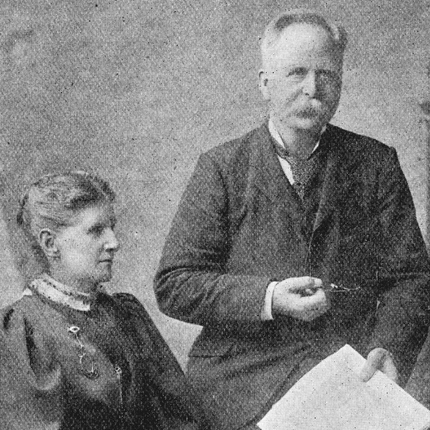Wellesley Bailey - TLM Hero
Wellesley Bailey - TLM Hero
Founder of The Leprosy Mission, Irish

The founder of The Leprosy Mission, Wellesley C. Bailey was born in Ireland in 1846. As a young man, he followed his brother to Faizabad in northern India, where he learned Hindi and lodged with a German Lutheran missionary. It wasn’t long before Wellesley was accepted by the American Presbyterian Mission, becoming a teacher at one of their schools in Punjab.
During this time, he was introduced to persons affected by leprosy, and was shocked to encounter a disease he thought was confined to the Bible. It was a disease that, at the time, had no known cure and was not understood, meaning those affected were isolated from their communities and the disease harmed and mutilated their bodies without any meaningful defence from modern medicine.
He said of that first encounter,
“I almost shuddered, yet I was at the same time fascinated, and I felt that if there was ever a Christlike work in the world, it was to go amongst these poor sufferers and bring them the consolation of the gospel.”
These moments set the direction of his life’s work.
Wellesley married Alice, his childhood girlfriend, in Bombay Cathedral. However, when Alice became ill, they returned to Ireland. Whilst back in his homeland, Wellesley’s friends the Pim sisters encouraged him to tell others about his encounters with leprosy in India. They arranged talks that evolved into fundraisers and the Pim sisters committed to raising £30 a year for the newly formed ‘Mission to Lepers’ (the original name of The Leprosy Mission). Before long they were raising £900 a year and the Mission was caring for around 100 persons affected by leprosy in India.
When they returned to India, Wellesley worked as a lay missionary with the Church of Scotland, for whom he would teach and preach until 1882. Whilst working as a missionary, and later for a charity for women in India, he continued in an unpaid role at the head of the Mission from 1874 until 1886, when he was appointed full time secretary of the Mission.
Throughout their lives, Wellesley, Alice and their three children travelled frequently between Ireland and India and the Mission grew substantially both in the UK & Ireland and India. As word of the Mission spread, Wellesley and Alice visited the US, Canada, China, New Zealand, the Philippines, Japan, Korea, Malaysia, and Singapore where the Mission was able to expand its operations.
By 1917, when Wellesley retired from the Mission, it was working with more than 14,000 people affected by leprosy in 12 countries, funded by support offices in eight countries. Wellesley died in 1937, at the age of 91.
Over his lifetime, Wellesley started something that, 150 years later, is as strong as ever. There have been countless people cured of leprosy through his legacy and today we stand with a world without leprosy in sight. Wellesley was the original TLM Hero.